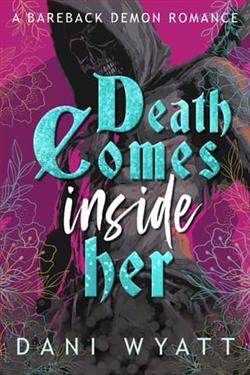Page 70 of The Only One Left
“She was, yeah,” Carter says. “And now I want to help her by finding out what really happened. Because she didn’t jump. I know that, and judging by that phone call you just made, you know it, too.”
The fact that he believes me is the only reason I follow Carter to his cottage. Even then, I make him walk several paces ahead of me, handswhere I can see them. Once inside the cottage, I stay by the door in case I need to make a run for it. But Carter’s movements are anything but threatening. After clearing the almost-empty whiskey bottle from the table, he pours himself a cup of black coffee to sober up.
“Want some?” he says.
“Coffee or whiskey?”
“Take your pick.”
“I’d rather see what it is you needed to show me so bad,” I say.
“In a minute.” Carter sits at his table for two and takes a sip of coffee. “First, I need to admit something. I lied about why I took a job here.”
I edge a half step toward the door. “If you want me to trust you, that’s the wrong way of doing it.”
“It is indeed,” Carter says. “But it’s important you know that. Now, remember that regular customer I told you about? The one who used to work here and suggested I take his place?”
“I do,” I say. “And I’m assuming he had a name.”
“Anthony,” Carter replies. “Although everyone called him Tony. Well, Tony did more than suggest I work here. He insisted on it.”
“Why?”
“He worked here for decades. Knew all the nooks and crannies. One day, he was poking around in the rooms above the garage. Some of the servants used to live there.”
“I thought they lived in the house or this cottage,” I say.
“In its heyday, Hope’s End was overrun with servants. There was a mechanic whose sole job was to look after Winston Hope’s collection of Packards. He had five of them. Archie told me that Mrs. Baker had to sell them over the years to help pay for this place’s upkeep.”
It’s strange to consider how populated Hope’s End once was. Every room filled, including ones over the garage. A small village atop a windswept cliff, all here to serve one outlandishly wealthy family.
“After the murders, the rooms above the garage were used for storage,” Carter says after another sip of coffee. “Boxes of stuff from thetwenties, even earlier. It was winter and there wasn’t much to do around the grounds, so Tony decided to make himself useful and get rid of whatever was in those boxes. Most of it was junk. Moth-eaten clothes, cracked plates, stuff from people who worked here way back when. Basically, all the stuff they left behind when this place cleared out.”
Carter retreats to the sleeping area of the cottage and pulls an envelope from its hiding place under his mattress. When he brings it to the table, I join him there, my caution overruled by curiosity.
“In one of those boxes, Tony found this.”
He removes something flat from the envelope and slides it toward me, facedown. From its shape and sepia color, I can tell it’s a photograph. An old one, as evidenced by the date scribbled on the back.
September 1929
I pick it up, turn it over, and see it’s a picture of Lenora in her youth. By now, I have no problem recognizing her. Even if I did, the divan Lenora sits on and the wallpaper behind her give it away. It’s her bedroom through and through. A photographic re-creation of the portrait in the hallway.
The only differences between the two are the dress—the one Lenora wears in the photo is flowing cotton instead of satin—and her position. Gone is the studied pose from the painting. Instead, Lenora leans against the back of the divan in a fashion that’s anything but ladylike, her hands resting over her rounded stomach.
I go numb with shock.
“No,” I say. “That can’t be.”
But the photograph doesn’t lie.
A month before her family was slaughtered, Lenora Hope had been pregnant.
It was an accident, Mary.
Or foolishness.
Or likely a bit of both.















